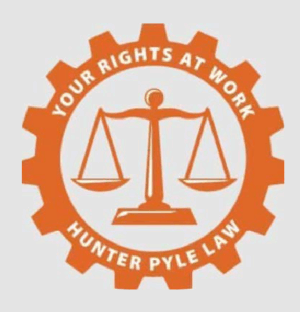Employee or Independent Contractor? The State of California Law in 2021

Determining whether a worker is an employee (EE) or an independent contractor (IC) under California law has become more complicated in recent years. However, in 2020 the California Legislature clarified that the ABC test (which is described more fully below) should be applied to all claims brought under either the California Labor Code or California’s wage orders.[1] The common law test, also referred to as the Borello test, is likely to govern all other claims.
The Borello Test
For many years, California courts seeking to determine whether a worker was an EE or an IC relied upon the common law test set forth in S.G. Borello & Sons, Inc. v. Department of Industrial Relations (1989) 48 Cal.3d 341 (Borello ). Under that test, “[t]he principal test of an employment relationship is whether the person to whom service is rendered has the right to control the manner and means of accomplishing the result desired.” Borello, 48 Cal.3d at 350.
Courts have noted that the strongest evidence of the right to control is whether the hirer can discharge the worker without cause, because “[t]he power of the principal to terminate the services of the agent gives him the means of controlling the agent’s activities.” Malloy v. Fong (1951) 37 Cal.2d 356, 370.
Note that it is the right to control, and not the actual exercise of control that governs. Where there is a written contract, hat question can often be determined on a group-wide basis suitable for class certification. See Ayala v. Antelope Valley Newspapers, Inc. (2014) 59 Cal.4th 522, 535.
In addition to the right to control, which is referred to as the principal test, there are a number of other secondary factors that courts may consider. These include: (a) whether the one performing services is engaged in a distinct occupation or business; (b) the kind of occupation, with reference to whether, in the locality, the work is usually done under the direction of the principal or by a specialist without supervision; (c) the skill required in the particular occupation; (d) whether the principal or the worker supplies the instrumentalities, tools, and the place of work for the person doing the work; (e) the length of time for which the services are to be performed; (f) the method of payment, whether by the time or by the job; (g) whether or not the work is a part of the regular business of the principal; and (h) whether or not the parties believe they are creating the relationship of employer-employee.
Courts applying the Borello test are supposed to weigh these factors in order to determine whether the hiring entity has met its burden of proving that the worker is an IC.[2] However, Borello can be difficult to apply in some cases. That is because in general, “the individual factors cannot be applied mechanically as separate tests; they are intertwined and their weight depends often on particular combinations.” Borello, 48 Cal.3d at 350.
Dynamex and the ABC Test
California’s wage orders contain a definition of employment that is different than the Borello test. In 2010, the California Supreme Court recognized that definition in the case of Martinez v. Combs (2010) 49 Cal.4th 35, 65. There, the Court noted that to employ, under the wage orders had three alternative definitions:
(a) to exercise control over the wages, hours or working conditions, or
(b) to suffer or permit to work, or
(c) to engage, thereby creating a common law employment relationship.
After Martinez, it was not entirely clear under what circumstances the wage order definition applied. Fortunately, in 2018, the Calfornia Supreme Court issued Dynamex Operations W., Inc. v. Superior Court (2018) 4 Cal.5th 903. There, the Court held that when determining employer status under the wage orders, the wage order definition applied.
Furthermore, the Court held that when interpreting the suffer or permit prong of the test, courts should apply the “ABC test.” That test asks the following questions:
(a) Is the worker free from the control and direction of the hiring entity in the performance of the work, both under the contract and in fact?
(b) Does the worker perform work that is outside the usual course of the hiring entity’s business?
(c) Is the worker customarily engaged in an independently established trade, occupation, or business of the same nature as the work performed for the hiring entity?
If the answer to any of these questions is no, then the worker is an EE. If the hiring entity can prove that the answer to each of these questions is yes, then the worker is an IC.
Dynamex left open the question of whether the ABC test should apply to Labor Code claims that did not involved the wage orders. However, in 2019, the Legislature resolved that question with AB 5, later codified at Labor Code section 2750.3. That statute adopted the ABC test, but also enacted approximately 50 exemptions from the test.
In 2020, the Legislature repealed section 2750.3, and enacted Labor Code section 2775, et seq. Section 2775 is clear that the ABC test should be used to determine whether a worker is an EE or an IC for all claims brought under either the wage orders or the California Labor Code. It is also clear that ABC is the entire test, meaning that courts should not seek to apply either the “exercises control over the wages, hours or working conditions,” or the “engage, thereby creating a common law employment relationship” prongs of the wage order test.
The Legislature also enacted a series of exemptions from the ABC test, including the following:
-
- LC § 2776 Business contract relationships
- LC § 2777 Referral agencies; service providers
- LC § 2778 Contracts for professional services; factors
- LC § 2779 Sole proprietors; partnerships; limited liability companies; corporations performing work pursuant to contract
- LC § 2780 Occupations in connection with sound recordings or musical compositions
- LC § 2781 Construction industry; contractors;
- LC § 2782 Data aggregators
- LC § 2783 Insurance and financial services industries; professional health care services; persons with professional licenses; salespersons; commercial fisher
- LC § 2784 Motor club
If you have questions about whether you should be classified as an employee or an independent contractor, please feel free to contact the attorneys at Hunter Pyle Law (hunterpylelaw.com) for a free and confidential intake process. You can also call us at (510) 444-4400.
Footnotes
[1] California has 17 different wage orders that apply to different industries and occupations. The wage orders were initially developed by the Industrial Welfare Commission (IWC), but, since the IWC was defunded, are currently regulated by the Division of Labor Standards Enforcement (DLSE). The wage orders set forth many workplace rules and regulations, including minimum wage, overtime, meal and rest periods, and reporting-time pay. For information regarding which wage order applies to a particular employee, see http://www.dir.ca.gov/dlse/WhichIWCOrderClassifications.pdf.
[2] The party seeking to avoid liability as an employer has the burden of proving that workers whose services it has retained are ICs rather than Ees. See Cal. Labor Code §§ 3357, 5705(a).


